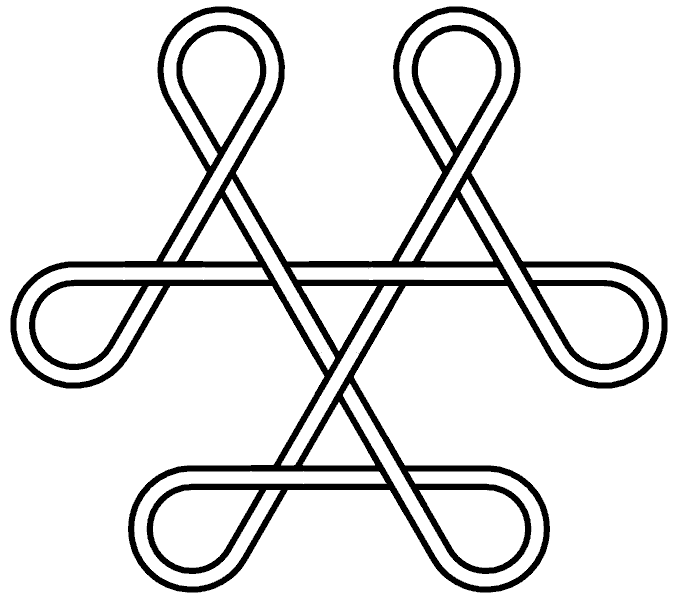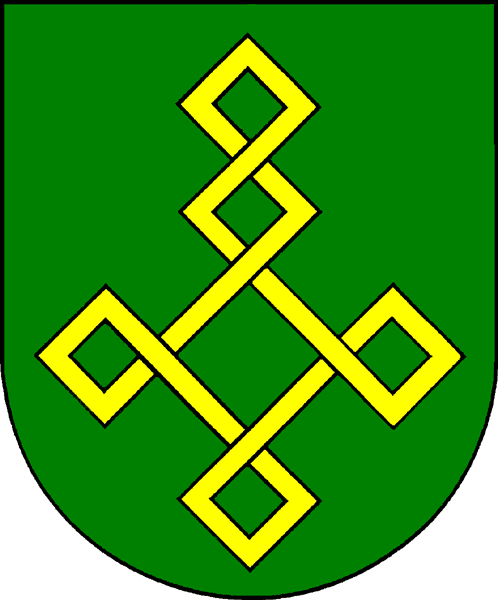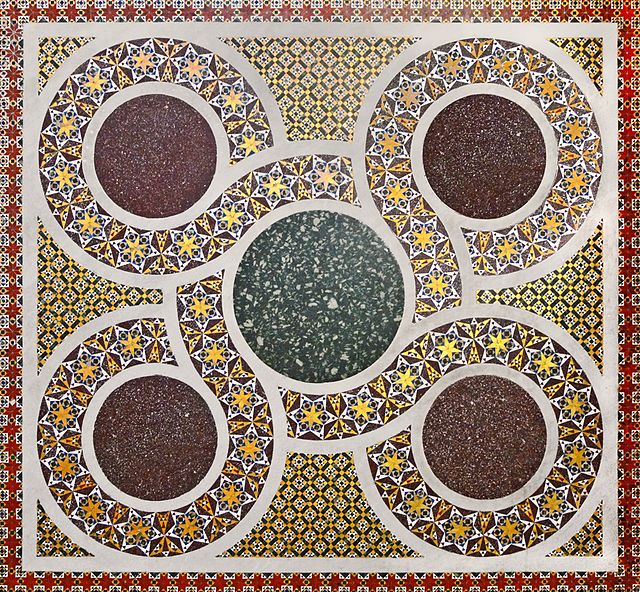0 1
|
|
|
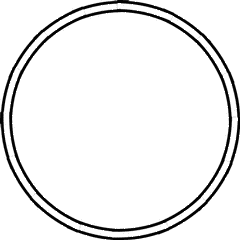
|
Visit 0 1's page at the Knot Server (KnotPlot driven, includes 3D interactive images!)
Visit [ 0 1's page] at Knotilus! Visit 0 1's page at the original Knot Atlas! |
Also known as "the Unknot" |
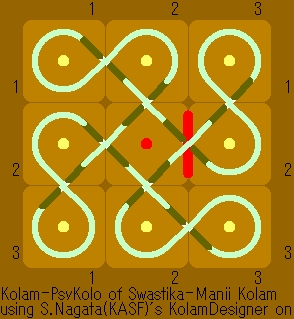 A temple symbol MANJI in a Japanese map[1] |
 A toroidal bubble in glass [2] |
|||
Knot presentations
| Planar diagram presentation | |
| Gauss code | |
| Dowker-Thistlethwaite code | |
| Conway Notation | Data:0 1/Conway Notation |
Three dimensional invariants
|
Four dimensional invariants
|
Polynomial invariants
A1 Invariants.
| Weight | Invariant |
|---|---|
| 1 | |
| 2 | |
| 3 | |
| 4 | |
| 5 | |
| 1 | |
| 2 | |
| 3 |
A2 Invariants.
| Weight | Invariant |
|---|---|
| 1,1 | |
| 2,0 | |
| 3,0 | |
| 1,0 | Data:0 1/QuantumInvariant/A2/1,0 |
| 2,0 |
A3 Invariants.
| Weight | Invariant |
|---|---|
| 0,1,0 | |
| 1,0,0 | |
| 1,0,1 |
A4 Invariants.
| Weight | Invariant |
|---|---|
| 0,1,0,0 | |
| 1,0,0,0 |
B2 Invariants.
| Weight | Invariant |
|---|---|
| 0,1 | |
| 1,0 |
B3 Invariants.
| Weight | Invariant |
|---|---|
| 1,0,0 |
B4 Invariants.
| Weight | Invariant |
|---|---|
| 1,0,0,0 |
B5 Invariants.
| Weight | Invariant |
|---|---|
| 1,0,0,0,0 |
C3 Invariants.
| Weight | Invariant |
|---|---|
| 1,0,0 |
C4 Invariants.
| Weight | Invariant |
|---|---|
| 1,0,0,0 |
C5 Invariants.
| Weight | Invariant |
|---|---|
| 1,0,0,0,0 |
D4 Invariants.
| Weight | Invariant |
|---|---|
| 0,1,0,0 | |
| 1,0,0,0 |
G2 Invariants.
| Weight | Invariant |
|---|---|
| 0,1 | |
| 1,0 |
.
KnotTheory`, as shown in the (simulated) Mathematica session below. Your input (in red) is realistic; all else should have the same content as in a real mathematica session, but with different formatting. This Mathematica session is also available (albeit only for the knot 5_2) as the notebook PolynomialInvariantsSession.nb.
(The path below may be different on your system, and possibly also the KnotTheory` date)
In[1]:=
|
AppendTo[$Path, "C:/drorbn/projects/KAtlas/"];
<< KnotTheory`
|
Loading KnotTheory` version of August 31, 2006, 11:25:27.5625.
|
In[3]:=
|
K = Knot["0 1"];
|
In[4]:=
|
Alexander[K][t]
|
KnotTheory::loading: Loading precomputed data in PD4Knots`.
|
Out[4]=
|
1 |
In[5]:=
|
Conway[K][z]
|
Out[5]=
|
1 |
In[6]:=
|
Alexander[K, 2][t]
|
KnotTheory::credits: The program Alexander[K, r] to compute Alexander ideals was written by Jana Archibald at the University of Toronto in the summer of 2005.
|
Out[6]=
|
In[7]:=
|
{KnotDet[K], KnotSignature[K]}
|
Out[7]=
|
{ 1, 0 } |
In[8]:=
|
Jones[K][q]
|
KnotTheory::loading: Loading precomputed data in Jones4Knots`.
|
Out[8]=
|
1 |
In[9]:=
|
HOMFLYPT[K][a, z]
|
KnotTheory::credits: The HOMFLYPT program was written by Scott Morrison.
|
Out[9]=
|
1 |
In[10]:=
|
Kauffman[K][a, z]
|
KnotTheory::loading: Loading precomputed data in Kauffman4Knots`.
|
Out[10]=
|
1 |
Vassiliev invariants
| V2 and V3: | (0, 0) |
| V2,1 through V6,9: |
|
V2,1 through V6,9 were provided by Petr Dunin-Barkowski <barkovs@itep.ru>, Andrey Smirnov <asmirnov@itep.ru>, and Alexei Sleptsov <sleptsov@itep.ru> and uploaded on October 2010 by User:Drorbn. Note that they are normalized differently than V2 and V3.
Khovanov Homology
The coefficients of the monomials are shown, along with their alternating sums (fixed , alternation over ). The squares with yellow highlighting are those on the "critical diagonals", where or , where 0 is the signature of 0 1. Nonzero entries off the critical diagonals (if any exist) are highlighted in red.
|
0 | χ | |||||||||
| 1 | 1 | 1 | |||||||||
| -1 | 1 | 1 |
Computer Talk
Much of the above data can be recomputed by Mathematica using the package KnotTheory`. See A Sample KnotTheory` Session.
In[1]:= |
<< KnotTheory` |
Loading KnotTheory` (version of August 17, 2005, 14:44:34)... | |
In[2]:= | Crossings[Knot[0, 1]] |
Out[2]= | 0 |
In[3]:= | PD[Knot[0, 1]] |
Out[3]= | PD[Loop[1]] |
In[4]:= | GaussCode[Knot[0, 1]] |
Out[4]= | GaussCode[] |
In[5]:= | BR[Knot[0, 1]] |
Out[5]= | BR[1, {}] |
In[6]:= | alex = Alexander[Knot[0, 1]][t] |
Out[6]= | 1 |
In[7]:= | Conway[Knot[0, 1]][z] |
Out[7]= | 1 |
In[8]:= | Select[AllKnots[], (alex === Alexander[#][t])&] |
Out[8]= | {Knot[0, 1], Knot[11, NonAlternating, 34], Knot[11, NonAlternating, 42]} |
In[9]:= | {KnotDet[Knot[0, 1]], KnotSignature[Knot[0, 1]]} |
Out[9]= | {1, 0} |
In[10]:= | J=Jones[Knot[0, 1]][q] |
Out[10]= | 1 |
In[11]:= | Select[AllKnots[], (J === Jones[#][q] || (J /. q-> 1/q) === Jones[#][q])&] |
Out[11]= | {Knot[0, 1]} |
In[12]:= | A2Invariant[Knot[0, 1]][q] |
Out[12]= | -2 2 1 + q + q |
In[13]:= | Kauffman[Knot[0, 1]][a, z] |
Out[13]= | 1 |
In[14]:= | {Vassiliev[2][Knot[0, 1]], Vassiliev[3][Knot[0, 1]]} |
Out[14]= | {0, 0} |
In[15]:= | Kh[Knot[0, 1]][q, t] |
Out[15]= | 1 |


